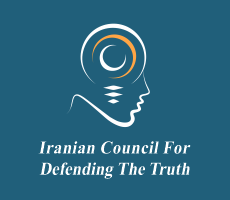I had just enrolled in the Moscow State Institute of International Relations (MGIMO) to pursue my master’s in international Relations with a focus on Governance and Global Affairs when EuroMaidan broke out in Ukraine. A few months after its onset but prior to the February 2014, a Syrian colleague of mine casually remarked to me how much that unrest reminded them of what had already been going on in their country for three years by then. For some reason, that sparked my imagination and made me want to compare and contrast those two regime change campaigns.
I also of course had to write a master’s thesis as well, so I then set to work discovering the method behind the US-backed madness in Syria and Ukraine, ultimately concluding that it represented a new form of warfare that I decided to call Hybrid Wars since the term was becoming popular around that time but in reference to Western allegations about Russian involvement in Ukraine. The book is an edited and expanded form of my master’s thesis, which was inspired by my Syrian friend. Had it not been for my colleague making the casual observation that they did, I might not have ever thought to write about this topic.
Upon completion of my studies, I then expanded my research to American-backed Hybrid Wars all throughout the Eastern Hemisphere, eventually releasing the e-book sequel “The Law of Hybrid War: Eastern Hemisphere” that’s available on Amazon Kindle. All of the articles, each of which are enumerated in the book’s description, are available individually for free at the Oriental Review online journal for those who are only interested in particular regions. I released it that way so that everyone could have equal access to my insight in order to hopefully help craft solutions (what I call “Democratic Security”) for countering Hybrid Wars.
My first book was also cited twice by the NATO Defense College in late 2015 as an example of the Russian understanding of Hybrid War. The first time was on page 2 of their November 2015 research paper on “Russia’s Renewed Military Thinking: Non-Linear Warfare and Reflexive Control” while the second was on page 10 of their December 2015 Forum Paper 24 about “NATO’s Response to Hybrid Threats”. Officially being an internationally recognized expert in this emerging field of security studies, I felt obligated to make this my career and thus specialize in all dimensions of Hybrid Wars and the countries most often targeted by them.
Hybrid Wars are basically all forms of non-friendly competition between states other than the use of uniformed soldiers, thus making it extremely broad and applicable as an umbrella concept for studying unconventional forms of aggression between states. Many countries have improved their military capabilities to the point of being able to inflict unacceptable damage on their adversaries, which is why the latter now commonly opt for indirect attacks against their targets in order to prevent conventional escalations (or at least until the targeted state is weakened enough to the point where their conventional military responses aren’t as formidable).
My first book specializes in the transition from Color Revolutions to Unconventional Wars while my second one is a collection of nearly 50 strategic risk studies about how this method of warfare can be used to destabilize China’s Belt & Road Initiative (BRI) all throughout the Eastern Hemisphere. Both categories of insight are directly applicable to the Mideast, and in particular Iran, because it’s been previously targeted by the first iteration of Hybrid Warfare (which is by no means the only form of this unconventional aggression) and is also a close Chinese partner that endeavors to become a key regional node in BRI.
Those states which don’t recognize “Israel” and are also against the US’ aspiration for regional hegemony have experienced various forms of Hybrid War against them for decades, which means that there’s a plethora of precedents to study in better understanding this concept and its evolution through time. Quite frankly, there’s no better place in the world to study Hybrid War than the Mideast if someone is just learning about this concept and wants to understand the breadth and depth of all that it entails. While potentially overwhelming, with the right guidance, one can quickly become well acquainted with the methods of Hybrid War in this way.
It’s not just for historical reasons that one should study Hybrid Wars in the Mideast, but also contemporary ones too since Iran and other countries such as Syria, Lebanon, and Yemen are being victimized by this method of warfare at this very moment. Severe economic pressure combines with terrorist elements and intense information warfare campaigns in order to provoke the population into undertaking certain actions or at the very least changing their sympathies according to the models predicted by the external aggressors. This sparks the trajectory that I analyzed in my first book of transforming Color Revolutions into Unconventional Wars.
With this understanding in mind, it’s evident that the aforementioned states are still suffering from Hybrid Warfare. In some of them, such as Yemen and Syria, it’s even crossed the threshold of becoming Libyan-like considering the open involvement of foreign military forces and the destruction that they’re responsible for in those targeted countries. What makes them different from the Libyan precedents, however, is that those conventional military campaigns have thus far failed to achieve their regime change goals, which is why they’re very curious cases to study in order to examine exactly why that is and learn from this insight.
Everything other than conventional military aggression has been waged against Iran in recent years, and even that aforementioned dimension was implemented during the First Gulf War after the US incited Iraq into attacking Iran for 8 years. Nowadays the most common forms of Hybrid War against Iran are the economic, informational, and terrorist ones. The campaign of so-called “maximum pressure” is meant to wreck its economy in parallel with the information warfare campaign misleading people into supporting regime change. All the while, some terrorist threats still abound, both those from already established terrorist groups and the latent ones that could arise from Color Revolution participants carrying out acts of terrorism throughout the course of their “protests” (riots).
The most important to focus on in my opinion are the economic and informational dimensions since the Iranian Armed Forces have already proven their capability in thwarting most terrorist threats. The economy must be stabilized in order to prevent newly desperate people from coming under the influence of anti-state information campaigns that incite them into either participating in another Color Revolution attempt or at the very least sympathizing with those who pursue such a regime change goal. Ensuring “Democratic Security” (counter-Hybrid Warfare strategies) is by nature more difficult than conventional security because the former’s threats are much more flexible and adaptive. They’re also less tangible, which makes it more challenging to identify and counteract them, especially in time to make a positive difference.
In short, Iran has resisted the kinetic (physical/military) threats related to Hybrid War but must continue to improve its “Democratic Security” defenses in the economic and informational domains, which is a never-ending work in progress due to the nature of such threats. The tactics that should be employed must stabilize the economy and promote patriotic sentiment in society. Just like Hybrid Wars are adaptive threats, so too must “Democratic Security” be a set of adaptive solutions, always changing in response to the threats that it aims to thwart.

